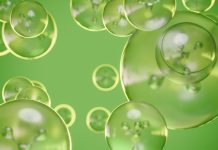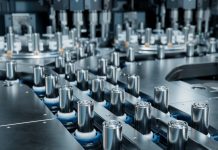Researchers at the Korea Research Institute of Standards and Science (KRISS) have developed a revolutionary catalyst that dramatically boosts the efficiency and affordability of green hydrogen production, paving the way for a sustainable energy future
The world is moving towards a future powered by clean, sustainable energy sources. Green hydrogen, produced through water electrolysis, holds immense promise as a next-generation eco-friendly fuel. However, the widespread adoption of green hydrogen hinges on making its production more efficient and cost-effective.
A breakthrough by researchers at the Korea Research Institute of Standards and Science (KRISS) offers a significant step in that direction, with the development of a high-performance, affordable catalyst that dramatically improves the efficiency of green hydrogen production.
High-performance catalyst for AEM water electrolysis
KRISS has developed a novel base metal catalyst for use in anion exchange membrane (AEM) water electrolysis, a promising technology for large-scale hydrogen production. AEM electrolysis is gaining traction because it theoretically allows the use of cheaper, non-precious metal catalysts. However, current AEM systems often rely on expensive and less durable precious metals like platinum and iridium, hindering the commercial viability of green hydrogen.
The KRISS breakthrough addresses this challenge by creating a catalyst that is not only more affordable but also significantly outperforms existing materials.
Overcoming the degradation challenge
The core of the KRISS innovation lies in the specific composition and structure of their catalyst. They combined molybdenum dioxide (MoO2), known for its high electrical conductivity, with nickel and a small amount of ruthenium (Ru). While MoO2 is a promising material, it suffers from degradation in the alkaline environments crucial for water electrolysis. The KRISS team discovered that this degradation is caused by the adsorption of hydroxide ions (OH-) on the MoO2 surface.
To solve this problem, they strategically incorporated ruthenium nanoparticles, smaller than 3 nanometers, forming a protective layer that prevents MoO2 degradation. This precise doping with ruthenium is the key to the catalyst’s enhanced durability and performance.
Superior performance and compatibility
The new catalyst exhibits remarkable improvements compared to existing commercial materials. Testing has shown a four-fold increase in durability and a more than six-fold increase in activity. These results represent a significant leap forward in the efficiency of green hydrogen production.
Furthermore, the KRISS catalyst has demonstrated excellent compatibility with renewable energy sources. When coupled with a perovskite-silicon tandem solar cell, it achieved an impressive solar-to-hydrogen conversion efficiency of 22.8%. This compatibility is crucial for truly sustainable green hydrogen production, as it allows for the direct integration of renewable energy sources into the process.
Potential for seawater electrolysis
Another significant advantage of the new catalyst is its ability to function effectively in saline water. This opens up the possibility of using seawater for green hydrogen production, eliminating the need for costly desalination processes.
“Currently, producing green hydrogen requires purified water, but using actual seawater could substantially lower costs associated with desalination,” explains Dr. Sun Hwa Park, a principal researcher at the KRISS Emerging Material Metrology Group. The team plans to continue research in this promising direction.
Collaboration and publication
This groundbreaking research was a collaborative effort involving the KRISS Emerging Material Metrology Group, Professor Ho Won Jang’s team at Seoul National University, and Dr. Sung Mook Choi’s team at the Korea Institute of Materials Science. The findings were published in the prestigious journal Applied Catalysis B: Environmental and Energy, highlighting the significance of this advancement in the field of chemical engineering.
The development of this high-performance, cost-effective catalyst by KRISS researchers marks a major milestone in the quest for a green hydrogen economy. By addressing the challenges of catalyst durability and cost, this innovation brings the commercialisation of green hydrogen significantly closer.
The potential for seawater electrolysis further enhances the appeal of this technology, promising a future where clean, sustainable hydrogen fuel plays a central role in meeting global energy demands.











